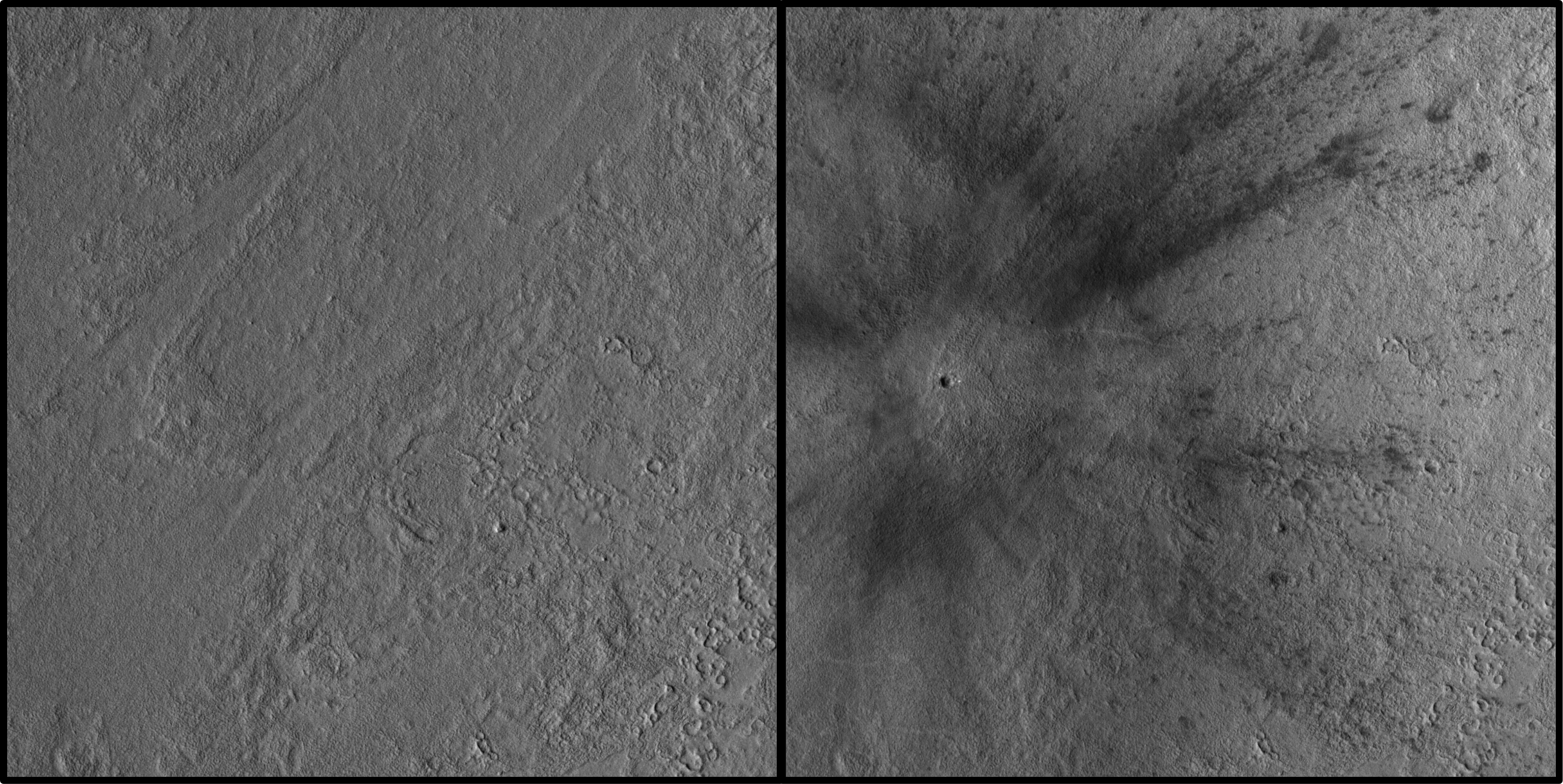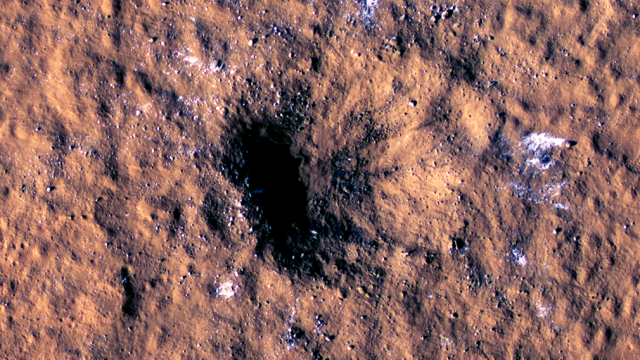On December 24, 2021 — the day before the Webb Space Telescope would launch — a rock hurtled through the thin Martian atmosphere and slammed into the ground, leaving a crater nearly 152.40 m across. This week, NASA revealed images of the impact site taken by a Mars-orbiting satellite.
In a press conference Thursday, Lori Glaze, director of NASA’s Planetary Science Division, said the rock that caused the crater was probably between 17 and 33 feet (5-10 metres) across. This week, a paper describing the impact and its seismic effects was published in Science.
“It’s unprecedented to find a fresh impact of this size,” said Ingrid Daubar, a planetary scientist at Brown University and who leads InSight’s Impact Science Working Group, in a NASA release. “It’s an exciting moment in geologic history, and we got to witness it.”
The meteorite strike was immediately detected as a magnitude 4 quake by NASA’s InSight lander, a four-year-old mission designed to study the geology of Mars. InSight’s seismometer picked up the seismic waves generated by the meteorite’s impact from 2,150 miles (3,460 kilometres) away.
The crater was first spotted on February 11 by scientists who operate the Context Camera and Mars Colour Imager aboard NASA’s Mars Reconnaissance Orbiter. The Context Camera took images of the region where the meteorite crash-landed before and after the event. The region is called Amazonis Planitia; the impact event left a clear circle on the ground and kicked up a debris field surrounding the crater.

The HiRise camera aboard also captured the impact’s aftermath, in a striking colour image of the site. The impact kicked up and scattered large chunks of ice, as seen in the HiRISE image. It’s the closest buried Martian ice has been observed to the Martian equator, the warmest part of Mars.
Using Mars Colour Imager data, the team determined a 24-hour period in which the impact occurred, and then compared that data to the seismic activity detected by InSight. Comparing the two data sources revealed that what was previously thought to be an ordinary marsquake was actually a meteorite impact.
The imaging orbiter isn’t going anywhere, but the InSight lander will likely die very soon. It has already lasted far longer than scientists planned or expected. When the lander powers down, there will be no mission on Mars devoted to listening to the planet’s internal rumblings, and the Martian interior will become a black box once again.
